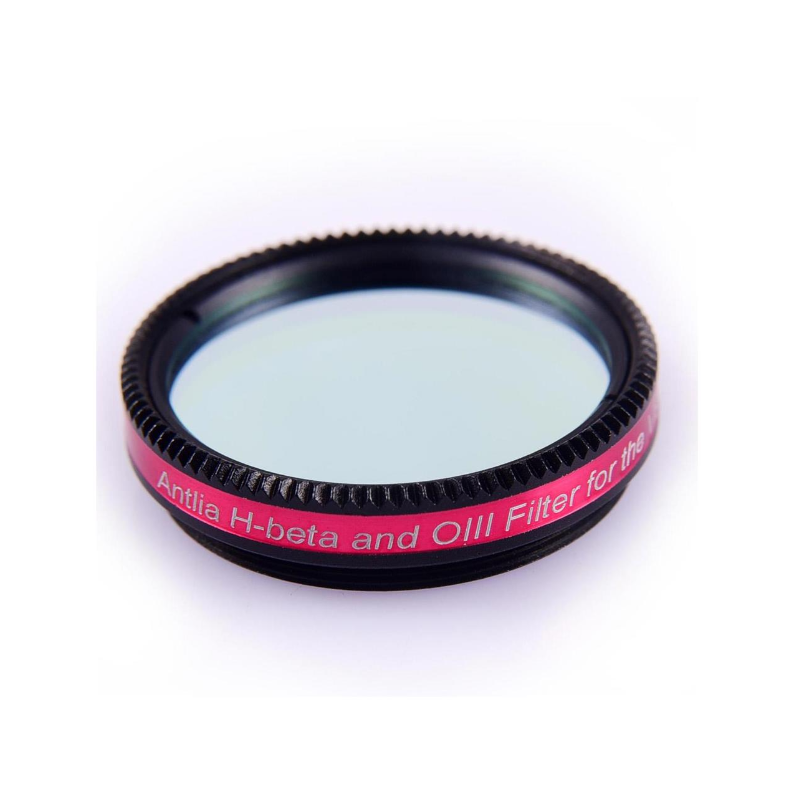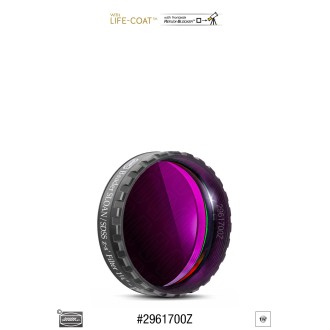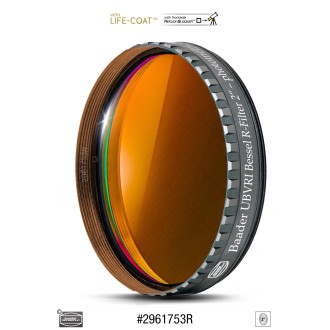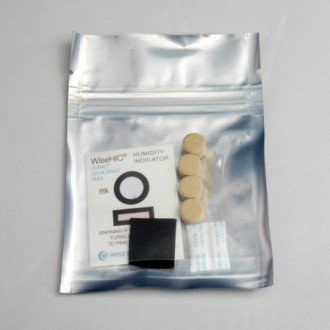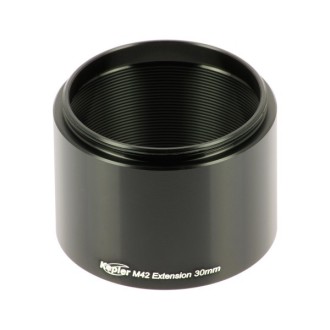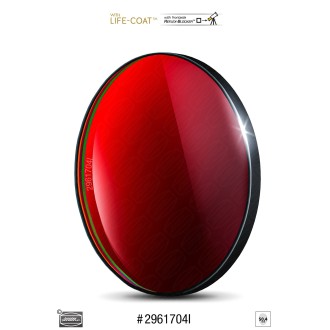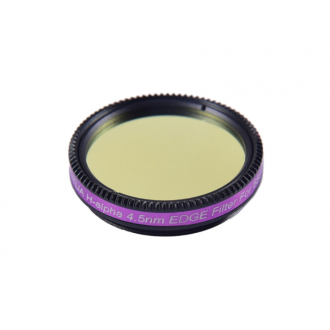Filter ANTLIA H-Beta / OIII model 31.75mm, visual and photographic
- Luminance filter to perfectly cut off UV-IR radiation
- Reduces halos on bright stars
- Average transmission rate greater than 95%.
- 50.8mm threaded objective (M48)
| Carrier | Description | Estimated Delivery | ||
|---|---|---|---|---|
 |
Home delivery - International | Home delivery - International |
Friday, 26 September - Friday, 3 October |
|

Home delivery - International
Home delivery - International
Estimated delivery:
Friday, 26 September - Friday, 3 October
Everything you need to know about the Antlia H-Beta/O-III filter
The Antlia H-Beta/O-III filter is designed for visual observation of gaseous and planetary nebulae and for astrophotography. The extremely narrow bandwidth of the filter allows maximum contrast to be obtained, even with excellent skies. Sometimes only the use of an O-III filter can distinguish the desired object. In many cases, for instruments larger than 250 mm in diameter, the use of an O-III filter is preferable to the more general UHC filter.
The Antlia H-Beta/O-III filter lets through the 2 Oxygen 3 lines + the more difficult Hydrogen-Beta line. It is designed for planetary nebulae, supernova remnants and certain emission or diffuse nebulae. Here is a non-exhaustive list of objects visible with an OIII filter:
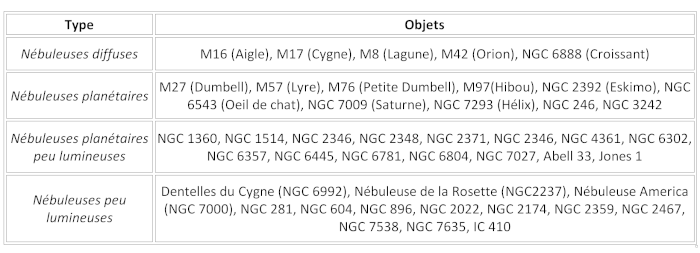
Very few objects emit in the H-Beta line. The Horsehead nebula (IC434) is the best known, but remains difficult to observe. A large-diameter instrument (greater than 300 mm) is recommended, in a very dark sky. The Dentelles du Cygne, Dumbell (M27) and the nebula will be relevant targets. These filters are made of the best glass available on the market.
Type of Use |
Comment |
| Visual observation (rural sky) | Significant contrast enhancement in emission nebulae |
| Visual observation ( urban sky ) | Significant increase of the contrast in emission nebulae |
| Silver photography | Extremely variable results but extremely long exposure times |
| CCD imaging | Must be used in conjunction with an anti-R filter |
| Digital photography (unmodified housing) | Significant contrast enhancement in emission nebulae |
| Digital photography (modified housing) | Significant contrast enhancement in emission nebulae |
| Webcam/Video ( planetarium ) | Incompatible |
| Webcam/Video ( deep sky ) | Correct if light pollution is high and if O-III emitting objects are observed |
Transmission curve
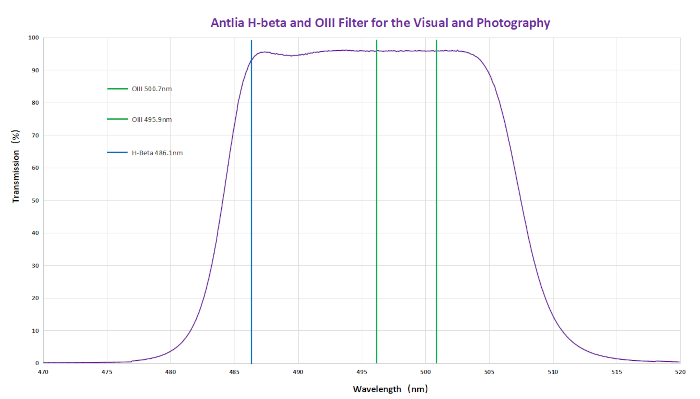
This diagram shows the percentage of transmission (ordinates) as a function of the wavelength of incident light (abscissae). 400 nm correspond to deep blue, 520 nm to green and 600 nm to red. The line of ionized hydrogen, the most abundant element in the Universe, is at 656 nm. The blue line marks the transmission curve of the Antlia H-Beta/OIII filter.
Technical specifications:
- Transmittance: > 90% on all 3 lines (OIII 500.7nm / 495.9nm and H-Beta 486.1nm)
- Filter thickness: 2 mm +/- 0,05 mm
- Optical quality: Lambda/4 or better
- Parallelism: Arc less than 30
- Mounting type: 31.75mm thread (M28.5)
- Cell: Aluminum with laser engraving and black anodizing

